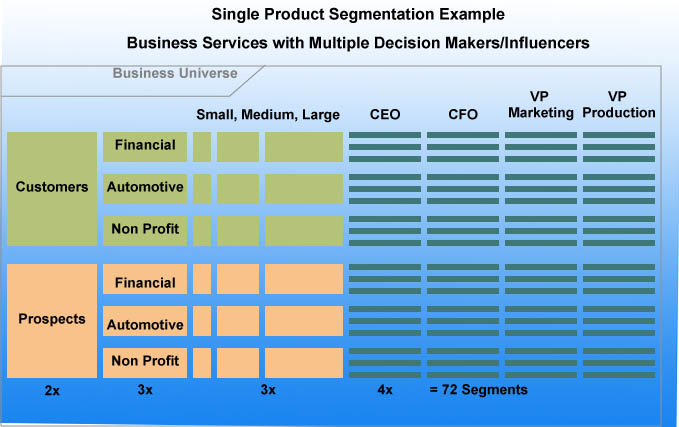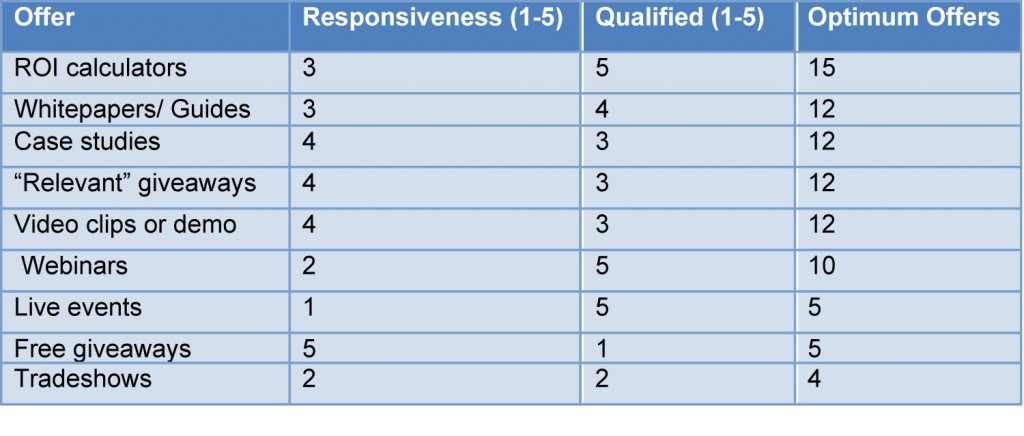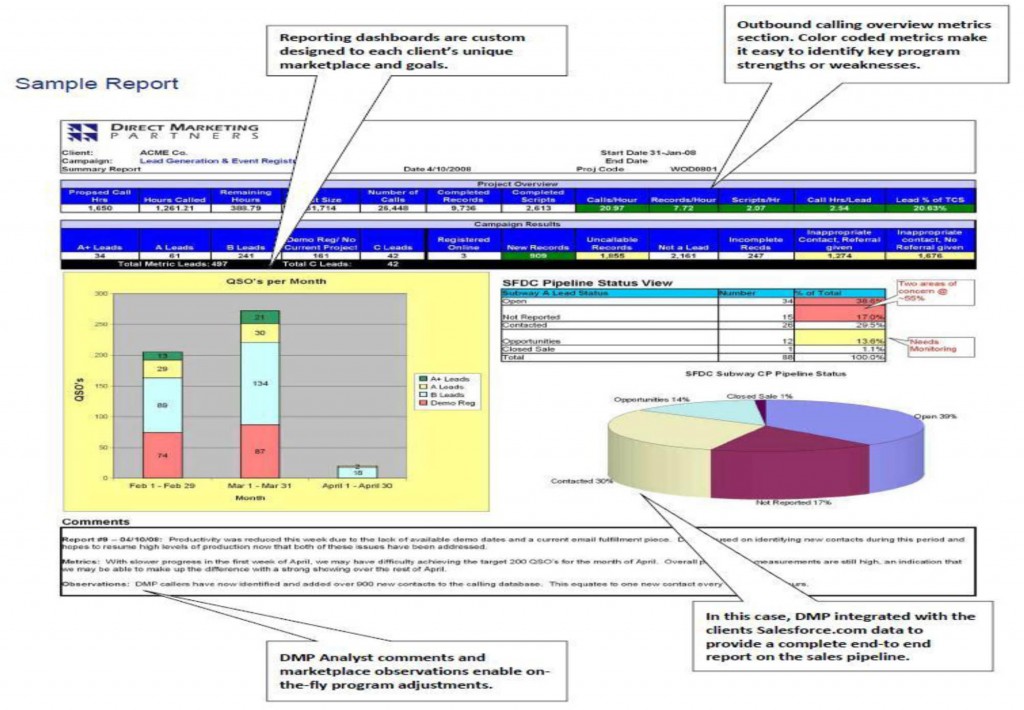In our last post, we examined the first four out of eleven ways to shorten the qualified lead generation process: planning, clearly defining “sales-ready qualified lead”, quantifying the “sales-ready lead quota, and aligning sales, marketing and management with your plan.
Now, we look at the remaining 7 tips to shorten the sales process and bring in sales-ready qualified leads—in fewer than seven to 13-plus touches.
1. Improve Target Prospect Data
Forrester Research reports that 37% of firms indicate this is a significant marketing problem at their company. Our guess is that the reality is more than 50%. The prospect database is only as good as the accuracy of the data, and it is a never-ending task keeping the data clean and current. People move around from job to job and company to company; companies are acquired or merge.
Usually, your prospect database is inherited from those who came before you. It is often a jerry-rigged compilation of data from different departments, with little consistency in the kinds of data being collected. Until you have standardized and fixed the database, it will constantly create gaps in your marketing tools and CRM system.
RELATED CLASS: Enterprise Sales Predictions: How to Use Big Data to Predict Sales & Increase Revenue
Because database cleanup is a huge job, the tendency to delay dealing with it is sometimes irresistible. But the ROI on a really good database is significant. Devise an approach to fixing and standardizing the database by creating a formal assessment, de-duping and cleaning process. Then create a standard to keep it current and consistent. Put all potential prospect records through this process. The payback is worth the investment of your time and attention.
2. Segment Your Target Markets
As the old saying goes, don’t try to boil the ocean. It’s a great deal easier to segment your target markets into smaller, more manageable segments that it is to try to address all markets at the same time. (See Figure 1.)
RELATED CLASS: How To Understand Your Buyers: 5 Insights for Better B2B Marketing
Compare campaign performance by segment to identify which segments perform the best. Historically, smaller, well-focused campaigns outperform larger, less focused campaigns. Messaging can be more targeted. The campaigns tend to be less costly, yet more productive, and conversion rates are higher. Filter inbound responses into your segments and monitor the touch quotas—you are likely to see fewer touches required for conversion.
Source: Beasley Direct Marketing
3. Tell a Story with Your Content
Your content must tell your prospects a compelling story to convince them that you understand their issues and have the solution. Content must be personalized to the segment you’re addressing; the verbiage that appeals to engineers may not communicate as effectively to other members of the buying team—such as finance.
Use consistent messaging across all touch point media, and sequence it to the buyer’s journey. You must earn the right to gather the qualification information by providing relevant, meaningful information that resonates with buyers and positions you as a peer and an industry leader—someone with whom they want to speak.
RELATED CLASS: Executing Winning Content Marketing
Strive to be memorable. This can be done through creative images or verbal themes; just stay away from the overly cute and gimmicky if you want to be taken seriously. (This varies from industry to industry, of course.)
4. Make Your Offer Compelling
Always offer something of perceived value. Research has shown that valued offers do get better results. Content can sometimes be your best offer if you have information that your customer can use in their work. ROI calculators are usually popular, as are educational white papers and case studies. Do a little research to find out what each segment will find interesting and compelling. (See Figure 2.)
RELATED CLASS: 7 Ways to Motivate Behavior in Any Online Channel
Source: PODI
5. Listen to Prospects and Engage with the Human Touch
The Direct Marketing Association (DMA) reports that tele-prospecting (when used properly) delivers the highest response rate of all direct marketing media. People are busy. They can easily disengage from online media, or skip over your emails without much thought. It’s harder for people to ignore a real person on the phone with a compelling message.
A personalized tele-prospecting call can be extremely efficient in soliciting information that many customers are reluctant to offer online or in any other way. Listen to the prospect like a peer—that is, as though you were in their shoes. Find out what they need/want to know. Train your calling team to provide helpful information and insights on the call to create value first. Do this before you start asking for the data you need to determine whether or not they are qualified.
Many firms struggle with the listening aspect; it’s a hard skill to master. However, history shows us that when inserted as part of a multi-channel touch sequence, the human touch can take a non-responder to qualified status quicker than other channels. Timing is everything, of course. If you wait too long after a prospect responds to make personal contact, the opportunity may be long over.
Some people ask “If a tele-prospecting effort is ultimately what’s needed, why don’t we just skip the outbound email or direct mail campaign, and just cold call?” You can do cold calling without campaign support. However, sending email and/or direct mail in advance makes it a warm call, and this helps open the door. Our experience is that “warming” prospects first with such a campaign increases telemarketing productivity by 30% to 40%. You can reference the campaign to draw prospects into a relationship and a peer to peer conversation. If they read the campaign material, the prospects may be better informed than they would be if no touch preceded the call.
6. Track All Touch Metrics
Because marketers are so busy, tracking and metrics sometimes get left in the dust. Don’t allow this to happen. Metrics are your best friend when it comes to gauging the success of campaigns and allow you to learn by comparing different approaches and their effect on the lead to sales conversion pipeline. Metrics are also the only way to justify your budget and very existence.
Set up your campaigns with the idea of testing and benchmarking tactical campaign results foremost in your mind. Make sure your systems for tracking are in place before you launch, and that Marketing and Sales are in a position to freely share and compare data status. Constantly monitor funnel conversion rates and stay current on where you stand vis á vis the master plan and sales goals. Figure 3 presents a sample tracking form based on Excel.
Source: Direct Marketing Partners
7. Acquire/Develop Comprehensive Lead Management Resources
Implement a lead management system and team that give you end-to-end visibility into all of your campaigns. Lead management is critical to staying on track with your plan and your quotas.
RELATED CLASS: How to Setup a Lead Management Process
Important: Get the manual process working first, before you automate. If you purchase the software first, you may discover that the software doesn’t have all the capabilities you want. Refine the process, then buy the right automation tools.
Multi-touch marketing is complex. Some prospects will be touched dozens of times by multiple touch vehicles. Track them all. (If you can find marketing automation software that tracks both online and off-line touches, so much the better. Many software packages track online only, which provides only a partial picture.
You will need a skilled and experienced team to make this work. Whether you contract this work with a lead management services firm or bring it in-house is less important than making sure you have the right skill levels.
Monitor touch streams closely and fix any problems as they arise. One of the advantages of having real metrics is that they allow you to respond quickly when things aren’t going as anticipated. And yes, this does happen. By monitoring the funnel conversion metrics you can identify which approaches worked the best, what approaches should be repeated and which discarded.
In our next installment, we’ll examine a real-world case study of a firm that shifted to multi-touch, multi-channel marketing and added email and tele-prospecting sequences, reducing touch requirements down to four to five touches (versus the seven to 13+ that we’ve been discussing) while increasing their sales pipelines.
Learn how to nurture more leads to qualified with an effective marketing automation program.
Watch Marketing Automation Best Practices for Success, and get expert advice to build your case for marketing automation, select the right solution, develop the right people with the right skills, and define your implementation strategy. Get instant access to this class now.


